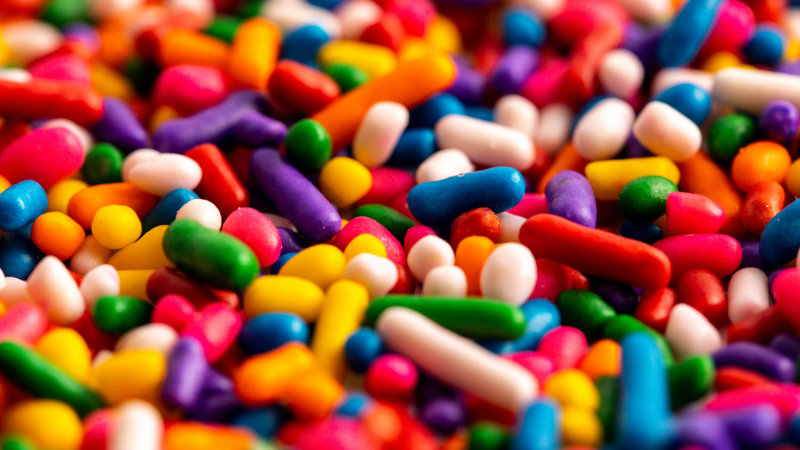
CHICAGO, April 23, 2025 — Food manufacturers will be asked by the U.S. Food and Drug Administration to replace all petroleum-based dyes in their U.S. products with natural alternatives, the U.S. Health and Human Services Department said Tuesday.
No timeline was given for completing the switch. Nor was a distinction made between products intended for foodservice and consumer packaged goods sold in supermarkets.
The changeover will be posed as a request rather than an order, HHS Secretary Robert F. Kennedy, Jr., said in announcing the move. But he indicated that he expects little resistance. During meetings weeks ago with major manufacturers serving the U.S. market, the companies expressed an eagerness to have a single federal ingredient standard rather than a hodgepodge of state requirements, according to Kennedy.
In addition, several speakers at the press event announcing the initiative said many of the processing companies had already removed petroleum-based dyes from the products they sell in overseas areas. Several of those markets have already outlawed the additives, the presenters said.
But, he acknowledged, there’s no formal pact or agreement to date with the processors.
In announcing the voluntary changeover, FDA Commissioner Marty Makary said his agency would draft and release a timeline for the replacement process.
To facilitate the switch to natural dyes, the FDA will seek approval in the next few weeks for the use of four more natural dyes in the U.S. food supply, Makary said. He added that the process should streamline the review process for other natural ingredients.
In addition, the FDA intends to revoke manufacturers’ use of Citrus Red No. 2 and Orange B as coloring agents within the next few months.
Makary said the agency, a part of HHS, will work with producers to eliminate six synthetic dyes by the end of the year. In its sights are FD&C Green No. 3, FD&C Red No. 40, FD&C Yellow No. 5, FD&C Yellow No. 6, FD&C Blue No. 1, and FD&C Blue No. 2.
The FDA also intends to ask manufacturers to accelerate the removal of FD&C Red No. 3 from their products. The agency had set a timeline during the Biden Administration to eliminate the additive from U.S. foods by 2028.
“I want to commend food companies for working with us to achieve this tremendous accomplishment,” Kennedy said during the press conference.
Asked what HHS would do if manufacturers balked, Kennedy indicated the Trump administration would try to steer consumers away from the laggards’ products through education.
“We’re going to start informing Americans of what they’re eating,” the longtime public-health advocate said. “Four years from now we will have these ingredients off the market, or you will know about them."
But the plan does not call for changing the labels on food packaging. For that, Kennedy said, HHS would have to secure Congressional willingness to alter current labeling requirements.
But he suggested that the effort to remove petroleum-based dyes is the first step in a crusade to upgrade the healthfulness of America’s food supply.
He indicated that pharmaceutical ingredients in food will be the next focus of HHS’ effort to rid the food supply of additives.
Makary said his agency would partner with the National Institutes of Health to study the effects food additives have on child health.
As Managing Editor for IFMA The Food Away from Home Association, Romeo is responsible for generating the group's news and feature content. He brings more than 40 years of experience in covering restaurants to the position.